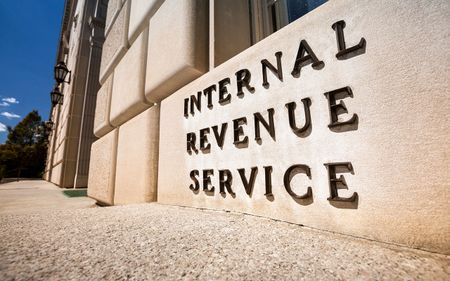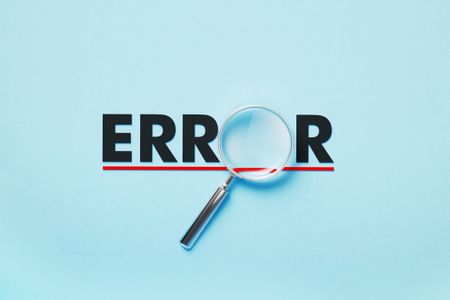Which Tax Form to Use
Use the simplest form to meet your needs and avoid errors.

For some taxpayers, tax time is easy -- as in EZ. They are the ones who can use the IRS’s simplest tax form to complete their annual duty. (If you file electronically, the software automatically selects the simplest form for you. E-filing also speeds up the processing of your return and the delivery of your refund.)
Sign up for Tax Tips in your e-mail throughout the filing season
You can use Form 1040EZ if you are single or married with no dependents, you have taxable income of $100,000 or less, and you are younger than age 65. Plus, your taxable interest income from bank accounts and bonds can’t exceed $1,500 in order for you to use the simplest tax-filing form.
The Long and Short of It
If your tax situation is a little more complicated, choose Form 1040A, also known as the short form. You can use this form if your taxable income is $100,000 or less and you do not itemize your deductions.

Sign up for Kiplinger’s Free E-Newsletters
Profit and prosper with the best of expert advice on investing, taxes, retirement, personal finance and more - straight to your e-mail.
Profit and prosper with the best of expert advice - straight to your e-mail.
However, unlike Form 1040EZ, the short form lets you claim a number of “above the line” deductions, including up to $250 of out-of-pocket expenses for educational supplies if you are a teacher or educational professional; tax-deductible contributions to an IRA; and deductions for college tuition and fees or interest paid on a student loan.
Choosing the short form also allows you to take advantage of a variety of tax credits, which are even more valuable than tax deductions. A tax credit reduces your tax bill dollar-for-dollar; a tax deduction merely reduces the amount of income that is taxed. For example, if you are in the 25% tax bracket, a $1,000 deduction would reduce your tax bill by just $250, but a $1,000 tax credit would slash your tax liability by the full $1,000.
If you have taxable income of $100,000 or more, you itemize your deductions on Schedule A, or you need to file any special forms to report self-employment income, investment gains and losses, or rental or partnership income, you must use Form 1040, also known as the long form.
Get Kiplinger Today newsletter — free
Profit and prosper with the best of Kiplinger's advice on investing, taxes, retirement, personal finance and much more. Delivered daily. Enter your email in the box and click Sign Me Up.

-
 Stock Market Today: Dow Rises 854 Points From Its Intraday Low
Stock Market Today: Dow Rises 854 Points From Its Intraday LowIf there's one thing markets hate, it's uncertainty. But uncertainty is all they're getting these days.
By David Dittman Published
-
 Are You a Retirement Millionaire Too Scared To Spend?
Are You a Retirement Millionaire Too Scared To Spend?If you are too scared to spend money in retirement, you may be saddled with regret. Here are three ways to safely enjoy your sizable retirement nest egg.
By Donna Fuscaldo Published
-
 U.S. Treasury to Eliminate Paper Checks: What It Means for Tax Refunds, Social Security
U.S. Treasury to Eliminate Paper Checks: What It Means for Tax Refunds, Social SecurityTreasury President Trump signed an executive order forcing the federal government to phase out paper check disbursements by the fall.
By Gabriella Cruz-Martínez Published
-
 IRS Layoffs Spark Delays, Doubt This Tax Season
IRS Layoffs Spark Delays, Doubt This Tax SeasonTax Season Tax experts say Trump’s downsizing of the IRS is already causing problems.
By Gabriella Cruz-Martínez Last updated
-
 States with the Highest Income Tax Rates for Retirees
States with the Highest Income Tax Rates for RetireesState Tax You may reconsider living and retiring in one of these states due to high taxes.
By Kate Schubel Last updated
-
 AI Tax Scams Target Middle and Older Adults: What to Know
AI Tax Scams Target Middle and Older Adults: What to KnowScams Whether you’re a retiree or Gen Z, scammers can gouge big financial losses with the help of artificial intelligence.
By Kate Schubel Published
-
 Tax-Deductible Home Improvements for Retirement in 2025
Tax-Deductible Home Improvements for Retirement in 2025Retirement Taxes Your aging-in-place plan could benefit from the medical expense tax deduction. But watch out for capital gains and property taxes.
By Kate Schubel Published
-
 Don’t Make These Five Mistakes on Your Tax Return
Don’t Make These Five Mistakes on Your Tax ReturnTax Filing The IRS warns taxpayers to watch out for these common errors as they prepare to file.
By Gabriella Cruz-Martínez Published
-
 You Don’t Want to Retire in Portugal: Here Are Three Tax Reasons Why
You Don’t Want to Retire in Portugal: Here Are Three Tax Reasons WhyRetirement Taxes With the NHR benefit retiring and pension taxes increasing, you might rethink your retirement plans in Portugal.
By Kate Schubel Published
-
 Why Abolishing Florida Property Taxes is Problematic
Why Abolishing Florida Property Taxes is ProblematicProperty Taxes A bold proposal that aims to eliminate property taxes in the Sunshine State has roused concerns from economists, and rightly so.
By Gabriella Cruz-Martínez Last updated